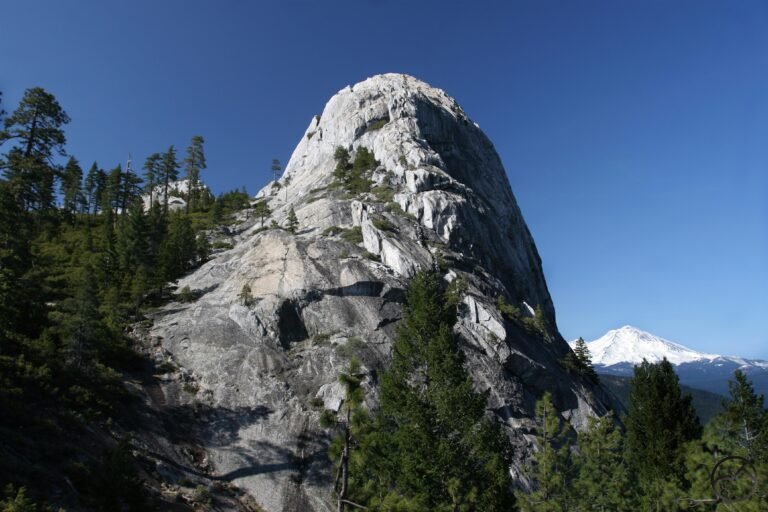If you’re looking for a remote and thrilling hiking experience in Arizona, the Castle Dome Trailhead Hike is one of the top picks for 2025. Located deep in the rugged Kofa National Wildlife Refuge, this hike offers breathtaking desert views, peaceful solitude, and a steep climb to the dramatic Castle Dome Peak. Whether you’re a seasoned adventurer or exploring this area for the first time, this guide gives you everything you need to plan a safe and unforgettable hike.

What Is Castle Dome Trailhead?
Castle Dome Trailhead is the starting point for a hike to Castle Dome Peak, a striking summit that rises 3,776 feet above the desert floor in southwestern Arizona. This peak is part of the Castle Dome Mountains, a small range named for its castle-like volcanic shape.
The area sits inside Kofa National Wildlife Refuge, roughly 40 miles northeast of Yuma, and is known for its wild terrain, red volcanic rock formations, and total lack of development. No signs, no visitor center—just untouched desert.
Why It’s Special in 2025

- Seclusion Like No Other: Even in 2025, this trail remains mostly untouched and crowd-free.
- Mining History: Explore nearby remains of 1800s silver and lead mining operations.
- Photographer’s Dream: Red cliffs and golden light make for unforgettable photos.
- Challenge for True Hikers: The route is unmarked and physically demanding—perfect for skilled adventurers.
Quick Summary: Castle Dome Trail Details (2025)

| Feature | Details |
|---|---|
| Location | Kofa National Wildlife Refuge, Arizona |
| Distance | ~6.2 miles round trip |
| Elevation Gain | ~2,500 feet |
| Difficulty | Moderate to Hard |
| Trail Type | Out-and-back (unmarked) |
| Best Season | November to April |
| Permit Required? | No |
| Dog-Friendly? | Not recommended |
| Trail Marked? | No (GPS or map required) |
How to Get There (2025 Directions)

Getting to Castle Dome Trailhead requires preparation. Here’s how to navigate it:
Directions from Yuma:
- Take US-95 North for about 30 miles.
- Turn right onto Castle Dome Mine Road (unpaved).
- Drive ~10 miles through dirt roads to a gravel clearing (unofficial parking spot).
GPS Coordinates:
- Latitude: 33.0855° N
- Longitude: 114.1908° W
Road Conditions (2025 Update):
- Passable with high-clearance 2WD or 4WD.
- Avoid travel after rain due to ruts and soft sand.
Fuel and Safety:
- Fill up in Yuma—no services past US-95.
- Bring all your water, food, maps, and gear.
What the Trail Is Like (2025 Hiker Report)
Start (0–2 miles):
- Flat terrain, scattered cactus, and dry washes.
- No signage—follow GPS or cairns (rock stacks).
Middle (2–3 miles):
- More elevation, loose gravel, stunning desert views.
Final Climb (~0.5 mile):
- Hands-on bouldering. No ropes, but solid hiking boots and gloves are recommended.
Navigation Tools You Need (2025 Guide)
Why Navigation Is Critical:
- There’s no cell service, no signs, and the trail disappears in some parts.
Best Apps for 2025:
- AllTrails+ – For GPX tracking and elevation graphs.
- Gaia GPS – Offline topo + satellite layering.
- OnX Backcountry – With BLM overlays.
Pro Tips:
- Download maps offline before leaving.
- Use airplane mode to save battery.
- Bring a compass and a printout of the trail map.
Weather in 2025: When to Go

Read Also: High Rocks Gladstone Oregon: Your Ultimate 2025 Guide to This Hidden River Gem
| Month Range | Conditions |
|---|---|
| Nov–Apr | 55–75°F, perfect hiking |
| May–Sep | 90–105°F+, not safe |
Warnings:
- Avoid summer due to heatstroke risk.
- Rain = slippery rocks and impassable roads.
What to Bring in 2025
| Item | Why It’s Essential |
|---|---|
| 3–4 liters of water | No water sources on the trail |
| GPS or paper map | Trail is unmarked |
| Hiking boots | Needed for rocky sections |
| First aid kit | Blisters and minor injuries common |
| Snacks/Energy bars | For endurance |
| Hat/Sunscreen/Sunglasses | No shade |
| Gloves (optional) | Helpful during steep scrambling |
Wildlife in 2025
Hikers report frequent sightings of:
- Bighorn sheep
- Lizards and Gila monsters
- Rattlesnakes (stay alert)
- Coyotes, hawks, and desert birds
Spring rains bring wildflowers: yellow poppies, desert marigolds, and purple lupine light up the trail.
Castle Dome vs. Nearby Arizona Hikes

| Hike Name | Distance | Difficulty | Marked? | Unique Feature | Best For |
|---|---|---|---|---|---|
| Castle Dome Trailhead | 6.2 mi | Moderate-Hard | No | Remote summit, solitude | Experienced hikers |
| Palm Canyon Trail | 1 mi | Easy | Yes | Native palm trees | Families, beginners |
| Muggins Wash Trail | 2.5 mi | Moderate | No | Wildlife and rock walls | Half-day explorers |
| Twin Peaks Trail | 4 mi | Moderate | No | Desert ridgelines | Scenic photography |
Geology: What Formed Castle Dome?
Castle Dome is a volcanic plug—a hardened lava formation that resisted erosion. Its rugged shape, rhyolite cliffs, and reddish rock date back millions of years. It has long served as a visual landmark for indigenous tribes and early miners.
Conclusion:
Castle Dome Trailhead in 2025 is a powerful blend of natural beauty, historical depth, and raw desert challenge. With offline tools, proper gear, and the right mindset, it’s one of the most unique and unforgettable hikes in Arizona.
Respect the land, be prepared, and leave no trace.
FAQs
Do I need a permit?
No. Castle Dome lies on public land—permits are not required for day hiking.
Is the trail marked?
No. Bring offline maps or a GPS device.
Is it safe for beginners?
Only for those in good physical shape with hiking experience.
Can I bring a dog?
Not advised. Heat and terrain are risky for pets.
Are there bathrooms or water stations?
No facilities. Pack everything you need and pack out all waste.

